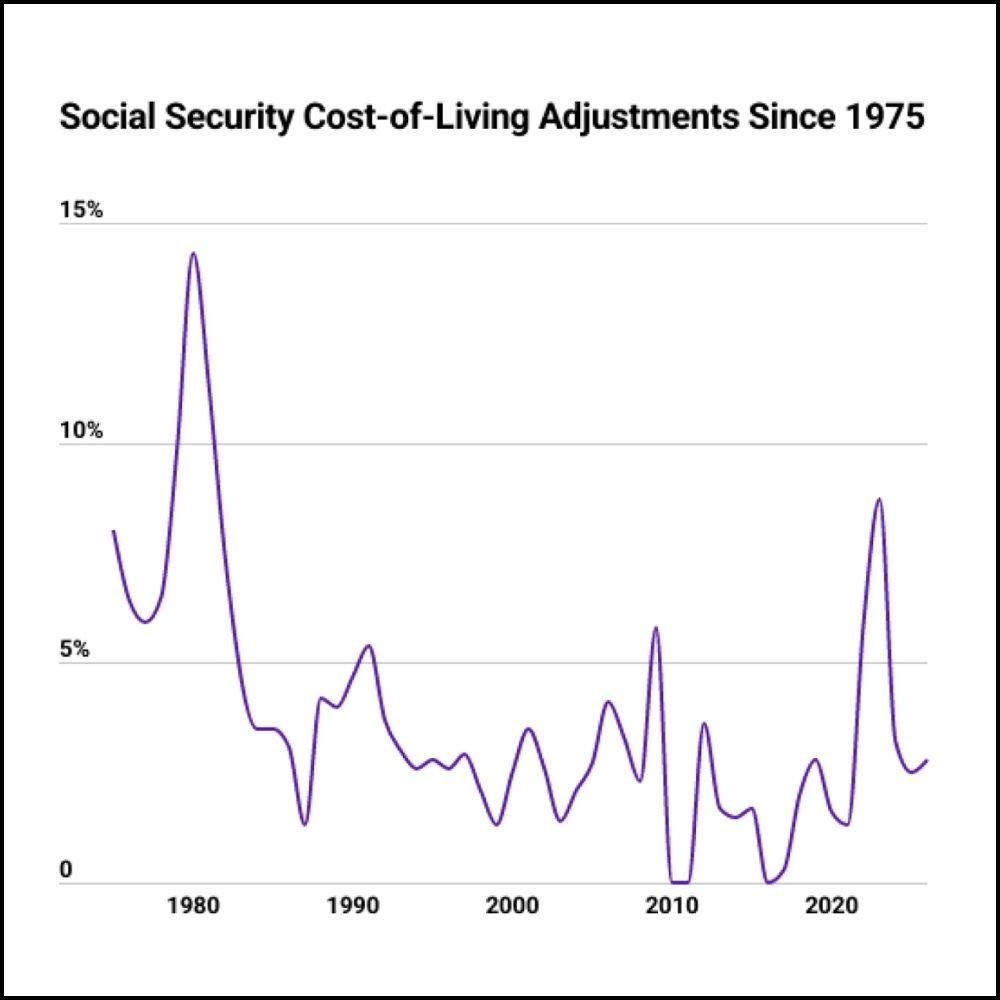For millions of Americans, Social Security benefits are more than just a monthly deposit — they are a lifeline that keeps essential bills paid and daily living secure. Whether it’s retirement income, disability benefits, or Supplemental Security Income (SSI), these payments help individuals and families manage their finances. That’s why knowing exactly when the payment arrives each month is just as important as knowing how much you can expect to receive.

November 2025 follows the Social Security Administration’s standard monthly payment schedule, but with a few quirks tied to the calendar. Because November 1 falls on a weekend, some recipients will see their benefits earlier than usual. Others will receive their payments on the second, third, or fourth Wednesday of the month, depending on their birthdate and the type of benefit they receive.
This guide breaks down the complete November 2025 payment schedule, explains how payout amounts are determined, and offers simple tips to help you plan your monthly budget with confidence.
Table of Contents
November 2025 Social Security Payments
When it comes to November 2025 Social Security Payments — Check Exact Dates and Payout Amounts, there are two major things to keep in mind: the schedule and the amount. The Social Security Administration (SSA) sets different dates for retirement, disability, and survivor benefits than for Supplemental Security Income. Most beneficiaries receive their benefits on a Wednesday according to their birthdate, while SSI recipients follow a different schedule — usually on the first of the month.
Payment amounts also vary. They are based on your personal earnings history, when you start collecting benefits, and whether you are receiving retirement, disability, or supplemental benefits. In 2025, the maximum possible monthly payments reflect the cost-of-living adjustments made earlier in the year, giving beneficiaries a clearer sense of their income.
Overview Table
| Benefit Type | Payment Date (November 2025) | Payout / Maximum Amount* |
|---|---|---|
| Retirement, disability, survivor benefits (birthdate 1–10) | Wednesday, November 12 | Up to $4,018 per month (depending on earnings) |
| Retirement, disability, survivor benefits (birthdate 11–20) | Wednesday, November 19 | Up to $4,018 per month (depending on earnings) |
| Retirement, disability, survivor benefits (birthdate 21–31) | Wednesday, November 26 | Up to $4,018 per month (depending on earnings) |
| SSI (individual recipients) | Friday, October 31 (early payment for November) | Up to $967 per month |
| SSI (eligible couples) | Friday, October 31 | Up to $1,450 per month |
*Actual payment amounts vary depending on your lifetime earnings, the age at which you filed for benefits, and applicable offsets.

How Social Security Payment Dates Work
The SSA distributes retirement, disability, and survivor benefits based on the beneficiary’s birthdate. This approach helps spread out payments throughout the month and ensures smoother processing. Here’s how it works:
- If your birthday falls between the 1st and 10th of the month, your payment arrives on the second Wednesday of the month.
- If your birthday falls between the 11th and 20th, your payment arrives on the third Wednesday of the month.
- If your birthday falls between the 21st and 31st, your payment arrives on the fourth Wednesday of the month.
For November 2025, these dates are:
- Birthdays 1–10: Wednesday, November 12
- Birthdays 11–20: Wednesday, November 19
- Birthdays 21–31: Wednesday, November 26
For Supplemental Security Income (SSI), the rule is different. Payments are normally made on the first day of the month. If that day falls on a weekend or a federal holiday, payments are issued on the last business day before. Because November 1, 2025 falls on a Saturday, SSI payments will be sent out on Friday, October 31, 2025.
People who started receiving benefits before May 1997 or who also receive SSI typically follow an older schedule where payments are made on the third day of each month. If the third day falls on a weekend or holiday, those payments are advanced to the nearest prior business day as well.
Payout Amounts in November 2025
Payment amounts vary widely depending on your situation. The maximum benefit is set each year based on national average wage indexing and cost-of-living adjustments (COLA). Here are the key numbers for 2025:
- Maximum retirement benefit at full retirement age: $4,018 per month.
- Average retirement benefit: Around $1,950 per month.
- Maximum early retirement benefit (age 62): Around $2,831 per month.
- SSI maximum payment for individuals: $967 per month.
- SSI maximum payment for eligible couples: $1,450 per month.
The actual amount you receive may be lower if you began collecting benefits early, had lower lifetime earnings, or are subject to deductions or offsets. For example, individuals receiving disability benefits may also have Medicare premiums or other deductions taken out of their payment. Similarly, SSI payments may be reduced if you receive other income.
Why Some Payments Arrive Earlier
One of the most common questions Social Security recipients have is why payments sometimes arrive at the end of the previous month rather than at the beginning of the scheduled month. This is most common with SSI payments.
The reason is simple: if the first day of the month falls on a weekend or a federal holiday, the Social Security Administration moves the payment to the last business day before that date. This is to ensure beneficiaries have access to their funds without delays caused by bank closures or federal holidays.
For November 2025, this affects SSI recipients because November 1 is a Saturday. Their payments are moved to October 31, which is the Friday before.
Different Schedules for Different Benefits
Not all Social Security payments follow the same timeline. Here’s how the schedules typically break down:
- SSI Only: Usually paid on the first of each month. If the 1st is a weekend or holiday, payment arrives the prior business day.
- Social Security (retirement, disability, survivor benefits): Paid on the second, third, or fourth Wednesday of the month depending on your birth date.
- SSI + Social Security: Those receiving both often get SSI at the beginning of the month and Social Security later in the month on the regular Wednesday schedule.
- Pre-1997 Beneficiaries: Individuals who started receiving Social Security before May 1997 often follow the old schedule, receiving their payments on the 3rd of each month.
Understanding which group you belong to makes it much easier to predict exactly when your funds will arrive.
Budgeting Around Payment Dates
Knowing your exact payment date is more than just a matter of convenience. It plays a major role in budgeting and financial planning, especially for retirees or individuals living on fixed incomes.
Here are a few smart steps to consider:
- Mark your payment date on your calendar: Whether it’s the 12th, 19th, 26th, or October 31 for SSI, it’s easier to manage bills when you know exactly when the money will arrive.
- Plan automatic payments accordingly: If you have recurring bills like rent, mortgage, or utilities, align them with your Social Security deposit date to avoid overdrafts or late fees.
- Keep a cushion in your account: Even though payments are regular, banking delays can occasionally happen. Having a small financial buffer helps prevent problems.
- Set up direct deposit: This is the fastest and most secure way to receive your benefit, eliminating the risk of check delays or loss.
What Affects Your Payment Amount
While payment dates are predictable, payment amounts can vary based on several personal factors. Here are the most common:
- Earnings history: The more you earned over your lifetime (up to the taxable maximum), the higher your benefit will be.
- Filing age: Claiming at full retirement age gives you the maximum benefit. Claiming earlier reduces the monthly amount, while delaying can increase it.
- Cost-of-Living Adjustments (COLA): Annual COLAs help keep benefits aligned with inflation. In 2025, benefits reflect the COLA announced the previous year.
- Offsets and deductions: Medicare premiums, taxes, or other deductions can reduce your net payment.
- Other income: For SSI recipients, any additional income can reduce the amount of the SSI benefit since it’s a needs-based program.
Special Considerations for SSI Recipients
SSI payments follow different rules than regular Social Security benefits because SSI is a needs-based program. This means that if your income or resources change, your benefit may change too. Recipients must also remain within resource limits to continue receiving benefits.
If you receive both SSI and Social Security, your SSI may be reduced to account for the other benefit. However, the combined amount can still help provide financial stability.
Because SSI payments often arrive early when the first of the month is a weekend, it’s especially important for recipients to budget wisely. For November 2025, since the payment comes on October 31, there will be no second payment during the month. That means recipients should make their funds stretch until December 1, 2025.
Important Dates to Remember for November 2025
- Friday, October 31: SSI payments for November
- Wednesday, November 12: Social Security payments for birthdays 1–10
- Wednesday, November 19: Social Security payments for birthdays 11–20
- Wednesday, November 26: Social Security payments for birthdays 21–31
These are the official payment distribution dates for November 2025. Recipients who have set up direct deposit will generally see their funds in their bank accounts on the same day the payment is issued. Those receiving paper checks may need to allow a few extra mailing days.
How to Track Your Payment
The SSA offers several ways to stay informed about your payment:
- My Social Security Account: An online portal where you can check payment dates, benefit amounts, and account details.
- Direct deposit notifications: Many banks send alerts when a deposit arrives.
- Paper check tracking: If you receive a paper check, keep in mind that mail delays can occur, especially during holidays.
Setting up a My Social Security account is one of the easiest ways to stay on top of your payments.
$2000 Direct Deposit for US Citizens in October 2025: Check Eligibility Criteria and Payment Dates
Final Thoughts
For November 2025, Social Security and SSI payments follow a familiar schedule with one notable twist: because November 1 falls on a Saturday, SSI payments will arrive on October 31. Other payments will arrive on the second, third, or fourth Wednesday of the month depending on the recipient’s birthdate.
The maximum monthly benefit for retirees at full retirement age in 2025 is approximately $4,018, while SSI recipients can receive up to $967 for individuals or $1,450 for couples.
Understanding these dates and amounts can make a real difference in how you plan your finances. By marking these dates on your calendar, setting up direct deposit, and budgeting strategically, you can ensure your monthly benefits support your needs effectively and predictably.

















